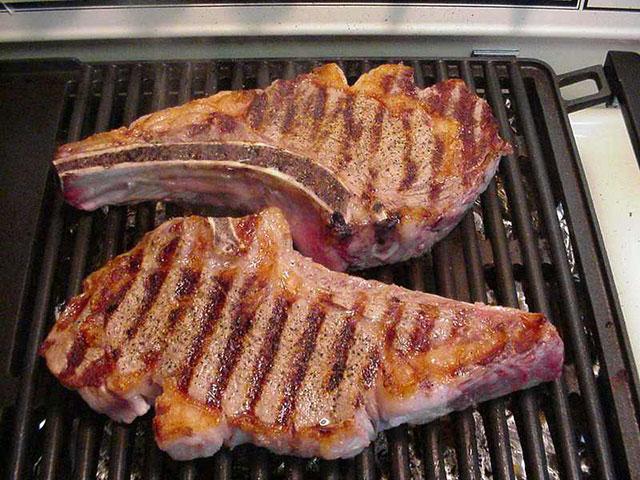Holding the Line on Beef Quality
Consumer Beef Demand May Be Challenged by Higher Prices
Could today's ever-tightening beef supplies, especially in the prime category, change consumer perceptions about beef quality moving forward?
Brian Earnest, lead economist for animal protein in CoBank's Knowledge Exchange group, doesn't see the industry taking a big step backward on quality as prime beef supplies tighten. But he does think higher beef prices could cause some buyers to back away in the summer months.
CoBank just released a report by Earnest, "Retailers to Appease Grillers with Value-Oriented Meat Features this Season." The report looks at what the summer holds when it comes to the U.S. protein market, and Earnest believes there are early signs that what he describes as "anemic real wage growth" will dampen spending at the meat counter through the next few months.
"A common expectation throughout the industry is that beef supplies will fall short of market needs," he reported. "This is already showing itself in more ways than one."
Dwindling cattle supplies, a harsh winter, and higher feed costs have all played a role in today's limited expectations for beef supplies, and notably those highest-quality cuts and grades buyers have come to expect in the retail space.
"After peaking in March, the percentage of beef that is grading choice is declining seasonally," Earnest reported. "It is sitting around 74% currently, which is about even with a year earlier and up from 2021 levels."
P[L1] D[0x0] M[300x250] OOP[F] ADUNIT[] T[]
Earnest told DTN this data is very positive, given the aggressive liquidation of the cow herd over the last couple of years.
"However, prime beef, which was around 12% of graded beef during the first quarter of 2021 and near 11% in 2022, is down to 10% today. Given the emphasis on value options, the shrinking supply of higher-graded beef cuts may find consumer resistance to the higher prices, which in turn should support elevated spreads from select-to-choice and choice-to-prime," said Earnest.
The analyst added that when considering how much prime beef is available for the summer months, it's important to note that the industry also continues to see shifts in marketing channels for this highest-end beef.
"Two years ago, prime beef was in good portion going into retail space because the food service industry was largely down during COVID," he said. "Now, if a consumer wants to see that prime product at the retail counter, they will have more difficulty finding it, and they will have to pay up to get it."
MORE AGGRESSIVE RETAIL ADVERTISING, FEWER PRICE CUTS
Earnest stressed that grocers are facing higher labor, energy and transportation costs, and as a result will likely this summer use more "feature activity" than price cuts to encourage consumers to buy proteins.
"As an alternative to retail price reductions, grocers are more likely to lean on feature (ad) activity and take a more aggressive approach to promoting price awareness of 'value options,'" he said.
"The three-week rolling average for feature activity shows both chicken and pork surged year over year at the beginning of 2023, after laying low through much of 2022. However, there was little to no change in beef feature activity yet."
CONSUMERS BUYING ON PRICE
Earnest told DTN that according to data from the Monthly Meat Demand Monitor, Kansas State University researchers continue to show that quality is always at or near the top when it comes to what consumers look for when buying beef. But they also buy to price.
Tighter supplies will certainly affect that price, but Earnest added he expects to see feedlots shift what they can to put themselves in a stronger position when it comes to providing as large a percentage of high-quality beef as possible, given the challenges.
"I think if we have fewer head to feed, they will be in feedlots a little longer, and we'll see more weight put on them -- especially when we are looking at the higher-quality carcasses," he told DTN. "That translates to maybe fewer head, but we may see more pounds on the carcass, which will likely mean good availability for the remainder of the year when it comes to high-quality beef."
Victoria Myers can be reached at vicki.myers@dtn.com
Follow her on Twitter @myersPF
(c) Copyright 2023 DTN, LLC. All rights reserved.






